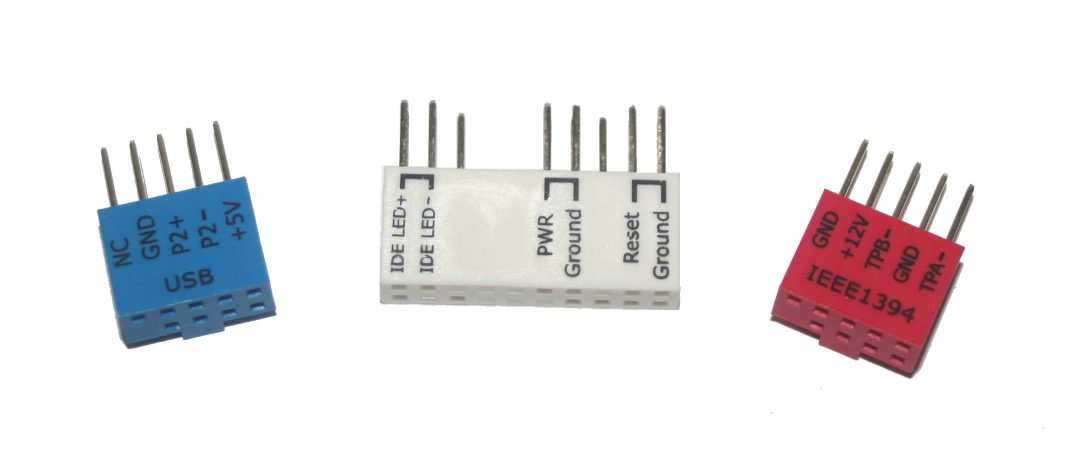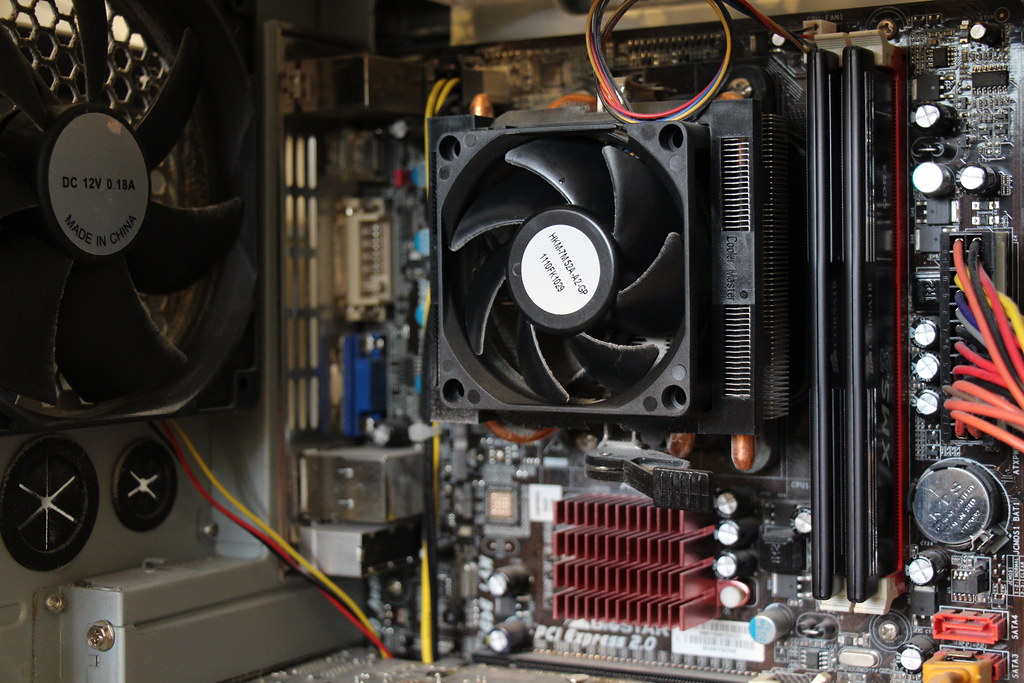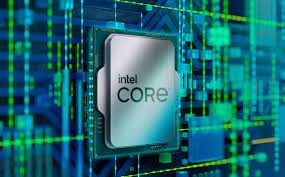Most computer cases have a host of connectors on the front panel, which allow you to connect devices such as a keyboard, mouse, and headset. The type and number of connectors can vary depending on the case, but there are some common ones that you’re likely to see. In this guide, we’ll look at the most common motherboard front panel connectors and explain what they do.
PS/2 Keyboard and Mouse Connectors
These connectors were once standard, but they’re slowly being phased out in favor of USB. PS/2 connectors are usually two round ports, one for the keyboard and the mouse.
USB Ports
USB is now the most common connector for peripherals, so it’s no surprise to see it on the front panel of most cases. USB ports come in different shapes and sizes, but they’re all generally rectangular.
Audio Ports
Audio ports allow you to connect headphones or speakers to your computer. They come in various shapes and sizes, but they’re all generally round.
Power / Reset Switches
These are two separate switches, usually located near the bottom of the front panel. The power switch turns your computer on and off, while the reset switch sends a signal to reboot your PC. There’s also a mechanism that will cut the power entirely in case you need to do this for any reason.
LED Indicators
Front panel connectors will sometimes have LED indicators on them, showing you whether your computer is turned on or not. While the power and reset switches usually have LEDs right above them to indicate when they’re in use, there are some cases where the only way to figure out if your PC is turned on or not is by looking at these LEDs.
VGA Port
A VGA connector is used to connect a computer monitor to your PC. The port comes in either M1 (male) or F1 (female). When using an M1 connection, you’ll often see a small hood covering the male pins so it can’t be inserted in the wrong way round.
Auxiliary Power Connector
This is used with older power supplies. It allows you to plug in more than one hard drive, which was necessary for storage devices when they didn’t have power sources. Unfortunately, since most cases now use SATA connectors for hard drives, this has become obsolete. You will occasionally find it on some newer cases, though.
Molex Power Connectors
A Molex connector is used to supply power to devices such as hard drives, optical drives, and fans. Most cases will have at least one or two Molex connectors on the front panel.
SATA Power Connector
This is now the most common connector type for attaching storage devices to your computer because it provides faster data speeds than Molex connectors. You’ll usually see these connectors in pairs (as they’re designed to power multiple components), but there are some cases where you’ll find them individually instead.
Floppy Disk Drive Connector
This type of connector was commonly found on older computers with floppy disk drives inside them, but nowadays, they’ve become rare. If you have an old floppy disk drive that you want to use, you’ll need to find a case with this connector on the front panel.
Functions of motherboard front panel connectors:
Now that we’ve gone over the most common front panel connectors let’s take a look at some of the things you can do with them.
- One of the most basic functions is connecting devices like a keyboard and mouse. This allows you to enter data into your computer and interact with it traditionally. You can also use these ports to attach external hard drives, giving you extra storage space. Additionally, many cases have LED indicators that will tell you whether your computer is turned on or not. This can be helpful if you have multiple power supplies you are switching between, as an indicator light will let you know which one is currently on.
- Front panel connectors also allow you to connect the audio ports on your motherboard and speakers or headphones. Playing sound through this connection might not be as high quality as playing it through a dedicated card (like the Asus Xonar DX), but many people don’t notice any difference in their games and videos. One of the most noticeable features of front panel connectors is that they allow you to plug some components into a USB rather than using more traditional connections like IDE or Molex. This eliminates the need for additional cards that previous generations of PCs needed to run devices such as printers and scanners, allowing your computer to remain streamlined.
Conclusion
Now that you know a bit more about front panel connectors, hopefully, you can see how useful they can be when it comes to connecting devices and getting information about your computer front panel convectors. While some of these connectors are starting to become obsolete, most cases still have at least one or two of them on the front panel so, if you’re ever in doubt about what goes where take a look at your motherboard front panel, and you’ll be able to find the answer.
FAQs
- What are motherboard Front panel connectors?
Front Panel connectors are the connectors on a motherboard that allow you to connect the front panel of a computer case to the motherboard. This includes things like the power button, reset button, hard drive LED, and so on.
- What types of Front panel connectors are there?
There are two main types of Front Panel connectors: analog and digital. Analog connectors use pins to send signals, while digital connectors use cables with wires that correspond to a specific function. Most modern cases use digital cables, but some older cases still use analog connectors.
- What does each of the Front panel connector pins do?
The functions of each Front panel connector pin vary depending on the Front panel connector. Still, they will generally fall into three categories: Power switch, reset switch, and general-purpose.
The main power pins on a Front Panel connector allow you to control the power to the board or device attached to it. For instance, when you press the On/Off button on your computer case, this is what triggers it to turn on and off. There will usually be at least two power switches: Reset and Power (commonly abbreviated as RST and PWRT). The reset pin triggers a reset from the system when connected to the ground through a resistor while the power pin controls whether or not voltage is being sent from your PSU.
The general purpose pins connect LEDs, switches, and other miscellaneous items. For example, the HDD LED is connected to one of these pins to light up when the hard drive is active.
- What do I need to know before buying a motherboard with Front panel connectors?
First and foremost, you need to ensure that your case has the appropriate connectors. The most common connector type is the 20-pin digital connector, but there are also 24-pin and 10-pin versions. If your case uses a different type of connector than what’s on the motherboard, you won’t connect them.
You’ll also want to check the pinouts for each connector on your motherboard. If you get the wrong cable type for one of the connectors, nothing will happen when you connect it to the motherboard. Different motherboards can use different types of Front panel connectors, so ensure you know what type of connector your motherboard uses before buying a new case. Most motherboards use 20-pin digital connectors, but some older boards may require a 24-pin or 10-pin connector instead. Ensure that you have a case with a matching type of connector, or otherwise, they won’t work together!
- What are some alternatives to using Front panel connectors?
While most newer cases use digital cables with individual wires for each function connected to a motherboard’s front panel connectors, other options may provide a better option for you.
One alternative would be to use a USB connection for all functions typically connected with Front panel cables. On modern motherboards, this is easy because they have internal headers that can connect directly to your case’s front panel ports using only two cables (one data and one power).







